22 – Post WW2 modifications
| < 21 – The Oil Storage Tank Farm | Δ Index | 23 – Future developments – the Frigate Factory > |
Rosyth Dockyard re-opened in 1938, as war was again imminent.
After World War II (1939-45) it was redeveloped to refit conventional and nuclear submarines, frigates, minesweepers and offshore protection vessels.
Britain’s first nuclear-powered submarine, another HMS Dreadnought, began her service here in 1963 and the third Polaris-armed submarine HMS Renown was refitted here in 1971
The Syncrolift, which lifts vessels out of the water for refitting or maintenance under cover, opened in 1980.
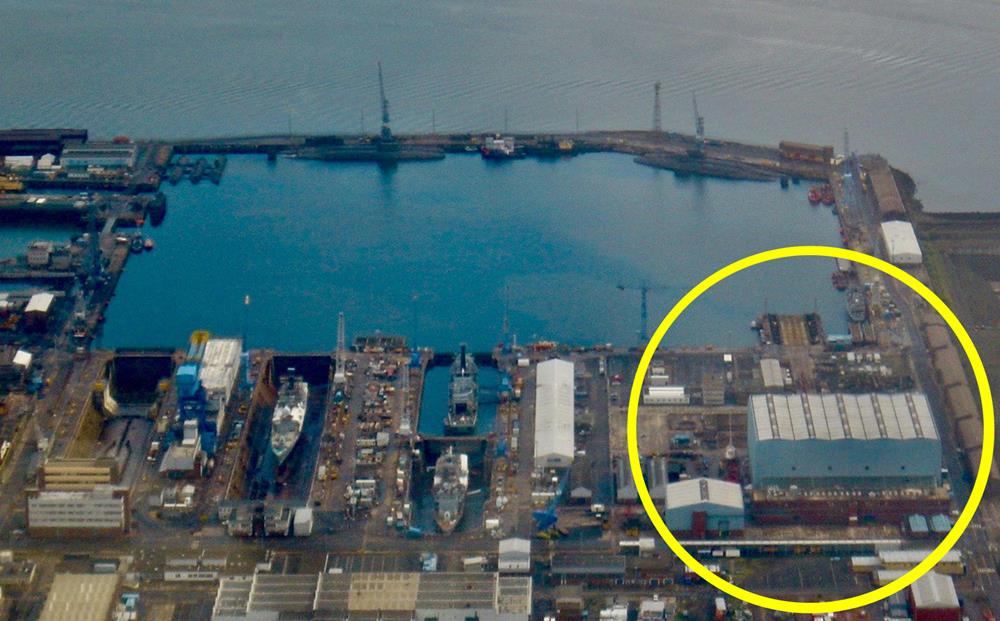 The syncrolift and associated repair workshop
The syncrolift and associated repair workshop
Babcock International has managed the dockyard since April 1987, and became its owner in 1997 after the government closed the naval base in 1995.
The last nuclear submarine refitting programme ended in 2003. Rosyth is now home to seven decommissioned nuclear submarines — the 4,600 tonne ‘hunter-killers’ Dreadnought, Churchill and Swiftsure, and the 7,800 tonne Polaris submarines Revenge, Resolution, Renown and Repulse. When these were decommissioned, the nuclear fuel was transferred to Sellafield in Cumbria and none remains at the dockyard.
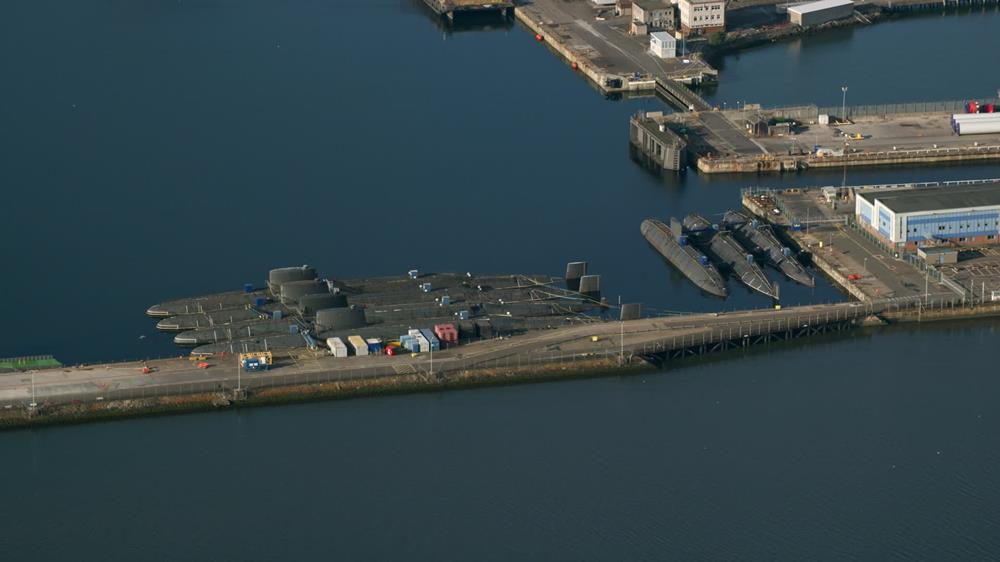 Decommissioned nuclear submarines
Decommissioned nuclear submarines
A £40m upgrade of the nuclear submarine facilities in No.2 and No.3 docks, against potential earthquake damage, began in 1995, with Babtie Group as engineers. The idea was to protect submarines using the complex from seismic loading caused by light to moderate earthquakes (Richter magnitude 5 or less). By November 1997, work on the entrance lock was complete. The existing mass concrete walls were pinned to the dolerite bedrock with 1,200 rocanchors 16.5-30.5m long. More details HERE.
In 1999, a £2.5m earthquake-proof submarine docking cradle was completed in No.3 Dock. The vessel rests on timber and steel blocks profiled to the hull. These sit on four concrete rafts 29m high, 9m long and 500mm deep, ‘floating’ on 120 rubber bearings. This arrangement keeps the submarine vertical at all times — vital when unloading fuel rods from a reactor core — preventing core meltdown and minimising the risk of a nuclear accident. The dock is sealed by a new 6,000 tonne floating concrete caisson, which replaces the old steel gate.
Modifications needed to build new aircraft carriers
In February 2008, a four year £50m contract was awarded to Rosyth Dockyard for the assembly of two 65,000 tonne aircraft carriers, each 280m long, 70m wide and 56m high. HMS Queen Elizabeth began service in 2016 and HMS Prince of Wales in 2019.
The work (engineered by Halcrow) includes modification of No.1 Dock, with 295 bored concrete piles 600mm in diameter and 150 rock anchors, and removal of granite blocks from the dock floor. A Goliath gantry crane with a 1,000 tonne lifting capacity will straddle the dock. The former emergency exit from the inner basin is being widened to 42m and fitted with a retractable sliding gate. Most of the north quay wall is being rebuilt.
 A resumé of the changes that Rosyth had to undergo to prepare for CVF’s challenges
A resumé of the changes that Rosyth had to undergo to prepare for CVF’s challenges
The No1 dock was originally built between 1907 and 1916 and used for battleships: as it was, it was long enough to accommodate CVF, but its cross- section was unsuitable for modern warship building, the ship’s hull being flat-bottomed rather than the traditional V-shape of the 1916-era battleships. Huge granite steps, known as altars, that stuck out from the side of the dock have had to be cut back to the width of the top tier, widening the dock by 9 meters. The entrance to the dock was also widened from 38 meters to 42. However, the stepped altars were structurally important and BAM Nuttall had to compensate for their removal by installing 150 rock anchors up to 21m into the sides of the dock.
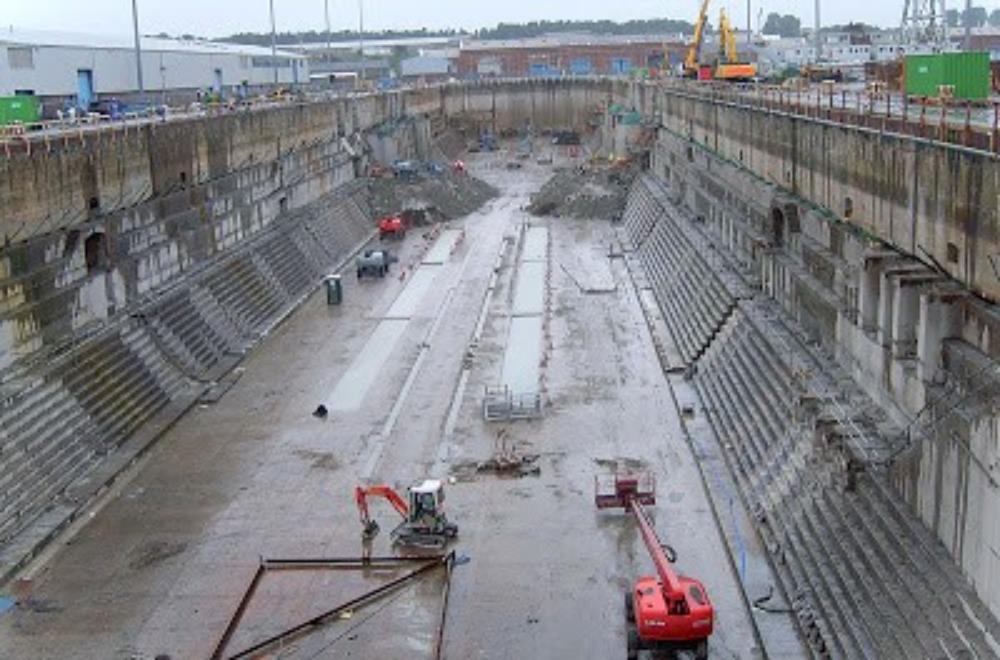 The gigantic No1 Dock is prepared for its role
The gigantic No1 Dock is prepared for its role
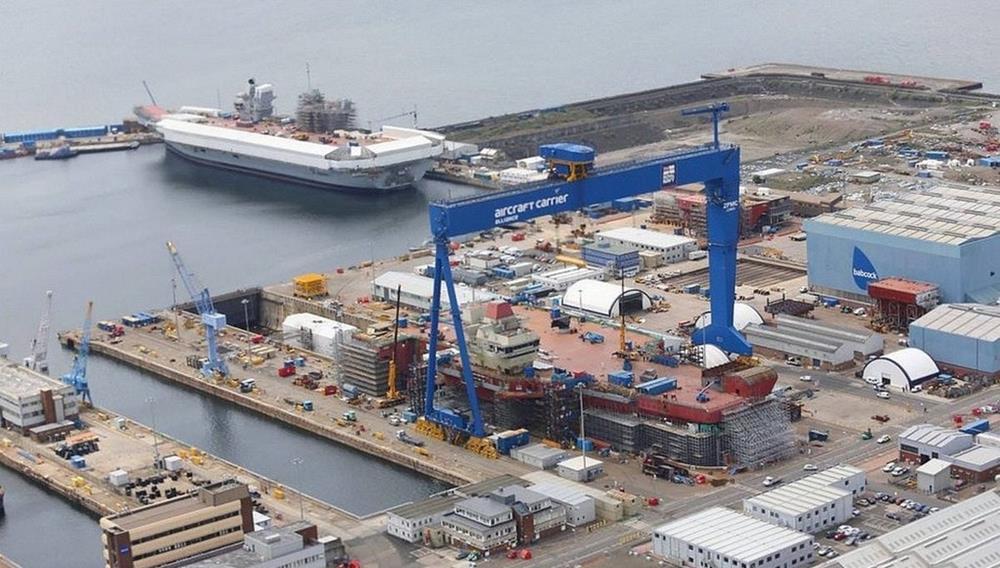 The Goliath Crane
The Goliath Crane
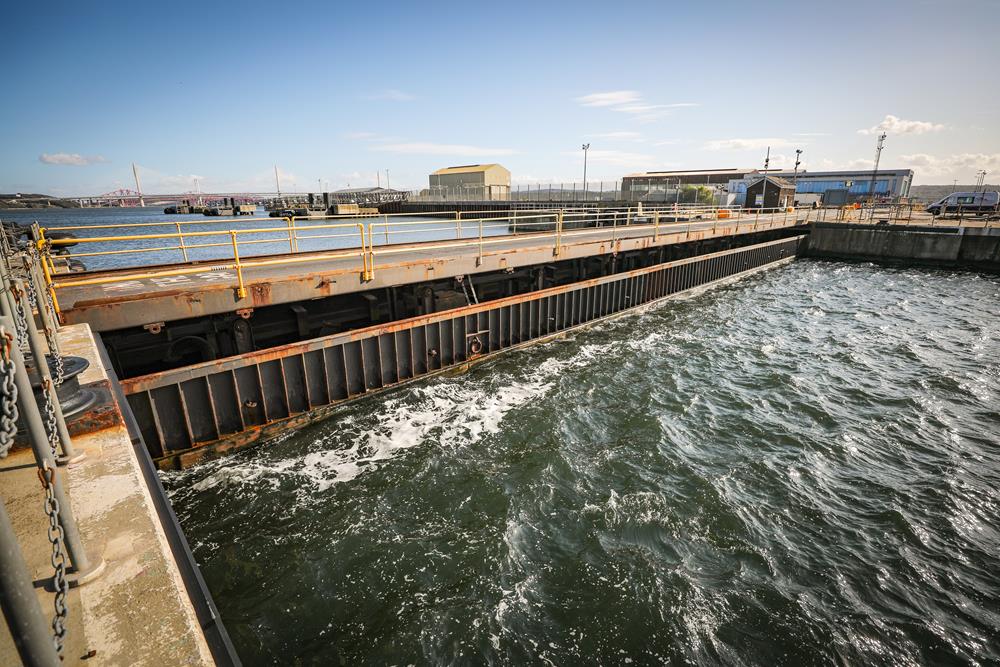 The widened direct entrance
The widened direct entrance

Direct entrance gate opening . . .
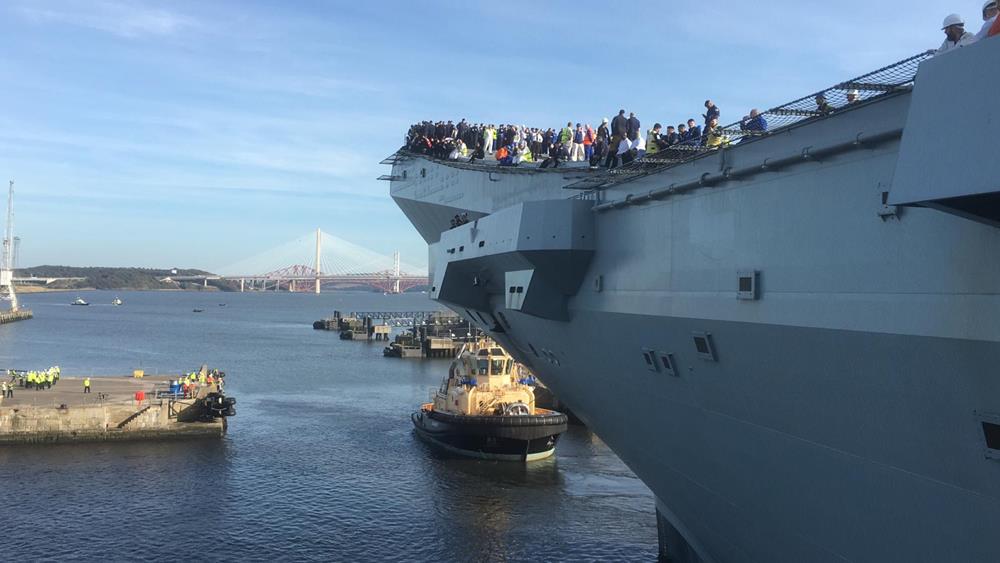 . . . to allow HMS Prince of Wales to exit – September 2019
. . . to allow HMS Prince of Wales to exit – September 2019
| < 21 – The Oil Storage Tank Farm | Δ Index | 23 – Future developments – the Frigate Factory > |
top of page
